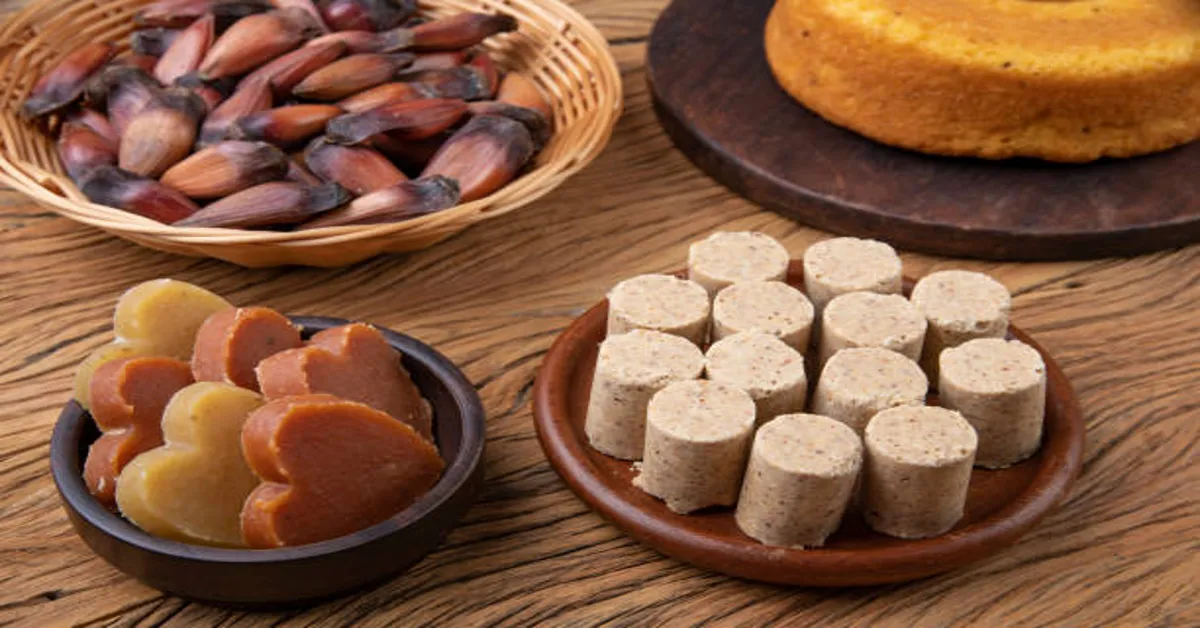Palentu, more widely recognized in some regions as polenta, is a traditional dish originating from northern Italy but cherished globally for its simplicity, adaptability, and wholesome nature. Made primarily from coarsely ground cornmeal, palentu is far more than just a rustic comfort food. Over the centuries, it has evolved into a versatile culinary base, a nourishing dietary staple, and even a gourmet ingredient in modern kitchens.
This article explores palentu from every angle: its fascinating history, cultural significance, preparation techniques, nutritional value, variations across the world, and health benefits. Whether you are new to it or wish to enrich your understanding, this detailed guide will provide a complete and informative journey.
Historical Background of Palentu
Palentu traces its roots to ancient civilizations that relied heavily on grains as daily sustenance. Long before corn was introduced to Europe from the Americas, people in Italy and neighboring regions prepared similar dishes using millet, spelt, or chestnut flour. The modern identity of it was shaped after the 16th century when maize (corn) became widely available across Europe.
In the villages of northern Italy, it became a cornerstone of peasant cuisine, often eaten daily with seasonal vegetables, legumes, and occasionally small amounts of cheese or meat. Because of its affordability and nutritional density, it symbolized resilience and resourcefulness in communities that relied on farming. Over time, its reputation grew beyond being a “poor man’s food” to becoming a celebrated dish enjoyed by chefs and food enthusiasts worldwide.
Cultural Importance of Palentu
It holds a deep cultural resonance in many parts of Europe, especially Italy, Switzerland, and the Balkans. In Italian culture, serving it is more than providing nourishment—it represents tradition, family unity, and hospitality. It was often prepared in large copper pots and stirred communally, a ritual that brought people together.
In other regions, it adapted to local tastes. For example:
- In Romania, it is known as mămăligă and is frequently paired with sour cream and cheese.
- In Switzerland, it appears alongside stews and alpine cheeses.
- In parts of South America, similar cornmeal-based dishes mirror the essence of it with regional variations.
Thus, it serves not only as food but as a cultural bridge connecting diverse culinary practices.
Nutritional Value of Palentu
It is naturally rich in carbohydrates and provides slow-releasing energy, making it a satisfying staple for both physically active individuals and those seeking wholesome meals. When enriched or combined with dairy and vegetables, it can also provide balanced nutrition.
Table: Nutritional Profile of Cooked Palentu (per 100 grams)
| Nutrient | Approximate Amount | Role in Health |
|---|---|---|
| Calories | 70–75 kcal | Provides energy for daily activities |
| Carbohydrates | 15–16 g | Main source of energy, supports brain function |
| Protein | 1.5–2 g | Helps in tissue repair and muscle growth |
| Fat | 0.2–0.4 g | Very low, supports heart health when paired with good fats |
| Fiber | 1–1.2 g | Promotes digestion and satiety |
| Vitamin A | Trace | Supports vision and immune health |
| Vitamin B6 | 0.04 mg | Aids metabolism and red blood cell production |
| Iron | 0.3 mg | Contributes to oxygen transport in blood |
| Magnesium | 5–7 mg | Important for nerve and muscle function |
| Potassium | 15–20 mg | Helps regulate fluid balance and blood pressure |
Though relatively modest on its own, it becomes nutritionally powerful when served with protein-rich foods such as beans, fish, meat, or cheese.
Health Benefits of Palentu
Eating it regularly offers several health advantages, especially when prepared with fresh and wholesome ingredients.
1. Supports Digestive Health
Thanks to its natural fiber content, it helps maintain bowel regularity, prevents constipation, and supports gut health. The fiber also feeds beneficial gut bacteria, which play a role in immunity.
2. Provides Steady Energy
The carbohydrates in it are digested gradually, releasing energy steadily over time. This makes it ideal for individuals who need sustained energy, such as athletes or people with demanding daily routines.
3. Gluten-Free Alternative
It made from pure cornmeal is naturally gluten-free, making it an excellent option for those with celiac disease or gluten sensitivity.
4. Heart-Friendly
Its low fat and sodium content make it heart-healthy, especially when paired with vegetables and lean proteins instead of heavy sauces.
5. Weight Management
It is filling without being calorie-dense. It can curb overeating and support weight control when included as part of a balanced diet.
Preparation Techniques of Palentu
The beauty of it lies in its adaptability. While traditional recipes may require long stirring times, modern methods have made preparation easier without sacrificing authenticity.
Basic Cooking Method
- Ingredients: Coarse cornmeal, water or broth, and salt.
- Ratio: Typically 1 cup cornmeal to 4 cups liquid.
- Method: Gradually whisk cornmeal into boiling water, reduce heat, and stir continuously to avoid lumps. Cook until thick and creamy (30–40 minutes traditionally, 10 minutes for quick-cook versions).
Variations
- Soft Palentu: Served creamy, similar to mashed potatoes.
- Firm Palentu: Allowed to cool and set, then cut into slices or cubes, which can be baked, grilled, or fried.
- Cheese-Enriched: Stirred with butter, parmesan, or local cheeses for richness.
- Vegetable Blends: Cooked with herbs, mushrooms, or tomato-based sauces for added flavor.
Modern Culinary Uses of Palentu
In contemporary kitchens, it has transcended its humble origins. Chefs now use it creatively in fine dining, fusing it with global cuisines.
- As a Base: Replacing rice or pasta, topped with stews, roasted meats, or seafood.
- Appetizers: Firm it sliced into wedges and served with dips or spreads.
- Breakfast Dishes: Soft it with poached eggs, sautéed greens, or yogurt.
- Desserts: Sweetened it puddings flavored with honey, nuts, or fruits.
Global Variations of Palentu
Though palentu is strongly associated with Italian cuisine, many cultures have their own cornmeal-based dishes:
| Country/Region | Local Name | Common Pairings |
|---|---|---|
| Italy | Polenta | Sausages, mushrooms, cheese, tomato sauces |
| Romania | Mămăligă | Cheese, sour cream, eggs |
| Switzerland | Polenta | Alpine cheeses, meat stews |
| Brazil | Angu | Meats, beans, vegetables |
| Africa (varied) | Ugali, Sadza | Vegetables, stews, sauces |
This shows how a simple grain-based dish takes on different identities while preserving its core essence.
Palentu in a Healthy Lifestyle
Including it in a balanced diet can contribute to long-term wellness. It can easily be part of vegetarian, vegan, or omnivorous meal plans. Pairing it with nutrient-rich accompaniments ensures balanced macronutrients and micronutrients.
For athletes, it serves as a pre-workout meal providing sustained energy. For families, it can be a cost-effective and versatile dish that accommodates different preferences. For those with dietary restrictions, it offers a safe, gluten-free option.
Tips for Enhancing Palentu
- Use vegetable or chicken broth instead of plain water for richer flavor.
- Incorporate fresh herbs like rosemary, thyme, or parsley for added aroma.
- For a creamy texture, finish with a drizzle of olive oil or a spoon of butter.
- Store leftovers by spreading it on a tray, letting it firm up, and cutting into shapes for grilling later.
Conclusion
Palentu is more than just cornmeal porridge; it is a dish woven into the history, culture, and nutrition of countless communities. From its humble beginnings as a peasant food to its modern reinvention in gourmet kitchens, palentu continues to inspire. Its health benefits, adaptability, and cultural resonance ensure that it remains timeless.
By learning to prepare and enjoy palentu in various ways, one embraces not just a dish but a tradition that nourishes both the body and soul.
ALSO READ: Hentairead: Understanding the World of Adult Anime and Manga
FAQs
1. What is palentu made from?
Palentu is made from coarsely ground cornmeal, typically cooked with water or broth until creamy or firm.
2. Is palentu the same as polenta?
Yes, palentu is another name for polenta, particularly recognized in certain cultures and regions.
3. Can palentu be eaten on a gluten-free diet?
Yes, palentu is naturally gluten-free when prepared from pure cornmeal, making it safe for celiac patients.
4. How can I serve palentu?
It can be served soft like porridge, firm and grilled, baked, or even transformed into desserts.
5. Is palentu healthy?
Yes, palentu is low in fat, provides steady energy, aids digestion, and is versatile for balanced diets.









